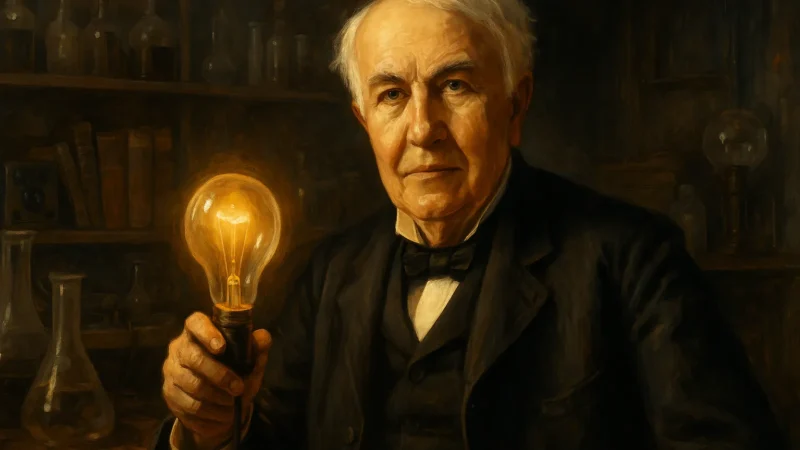Biography of Cleopatra: The Last Queen of Egypt and the Power of Political Seduction
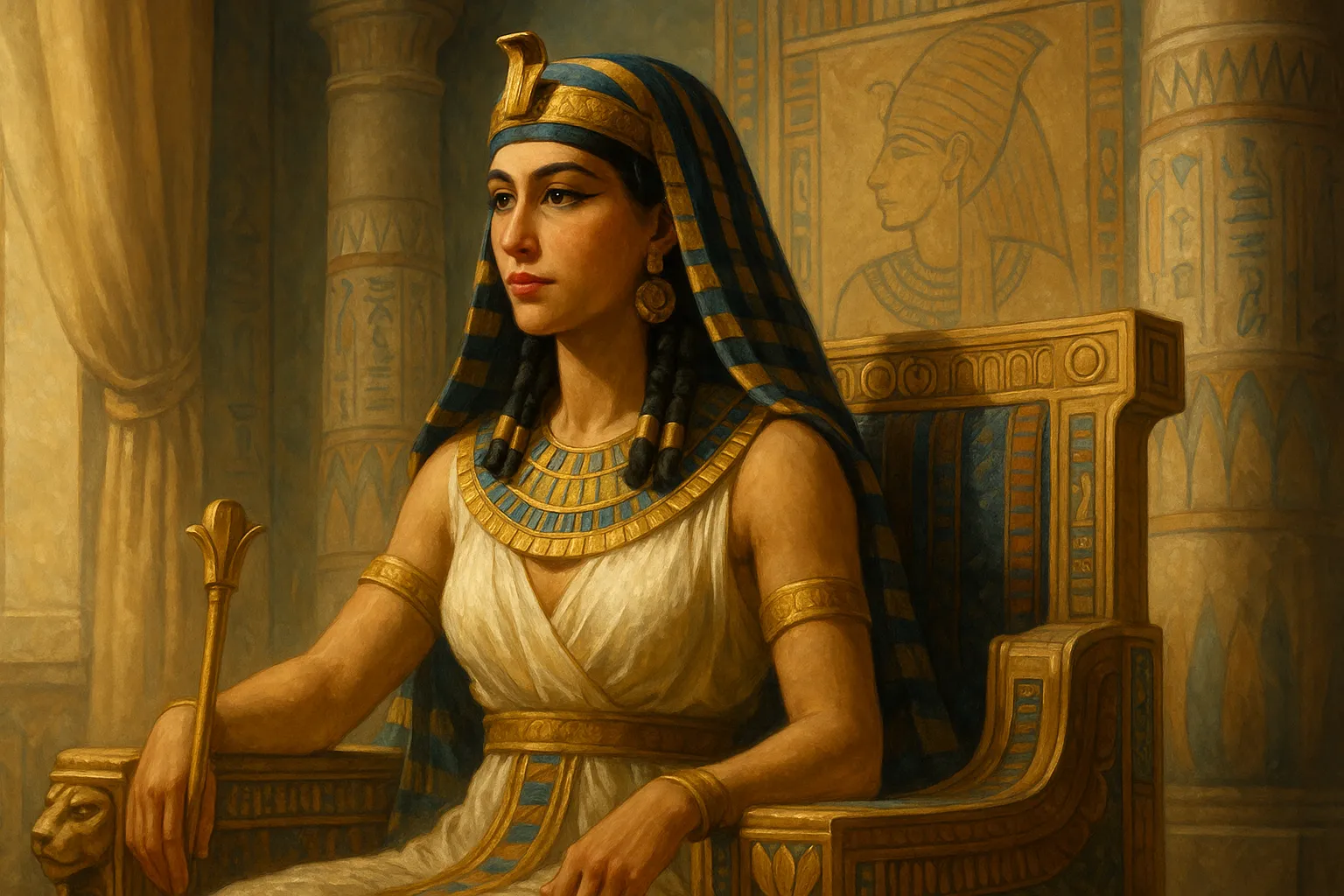
Few historical figures have captivated the imagination like Cleopatra VII, the last sovereign of ancient Egypt. Her life has been portrayed as a romantic tragedy, a political odyssey, and a symbol of feminine power in a world ruled by men. Cleopatra was not merely a lover of emperors; she was a strategist, a brilliant orator, a tireless diplomat, and a leader who fought to her final breath for her kingdom.
Her story unfolded between two worlds: the millennia-old Egyptian civilization of the pharaohs and the rising power of Imperial Rome. Between them, Cleopatra wove alliances, manipulated symbols, and ruled with cunning. Her legacy has been distorted and reinvented for centuries, but when we peel back the myth, we discover a fascinating woman who defined her era.
Between Myth and History
Cleopatra was born in 69 BCE in Alexandria, the cultural and scientific capital of the Hellenistic world. She belonged to the Ptolemaic dynasty, of Macedonian origin, founded by Ptolemy I, one of Alexander the Great’s generals. Although the Ptolemies spoke Greek and ruled as foreign monarchs, Cleopatra broke tradition: she learned Egyptian and presented herself as the living embodiment of Isis, the ancient Egyptian goddess.
Her childhood was marked by court conspiracies, family rivalries, and a refined education. She studied philosophy, astronomy, rhetoric, economics, and medicine. It is said that she spoke at least seven languages, allowing her to speak directly with foreign leaders without intermediaries.
Even as a child, she understood that the throne was more a political battlefield than a military one, and that survival required more than lineage—it required charisma, intelligence, and vision.
A Queen in a Man’s World
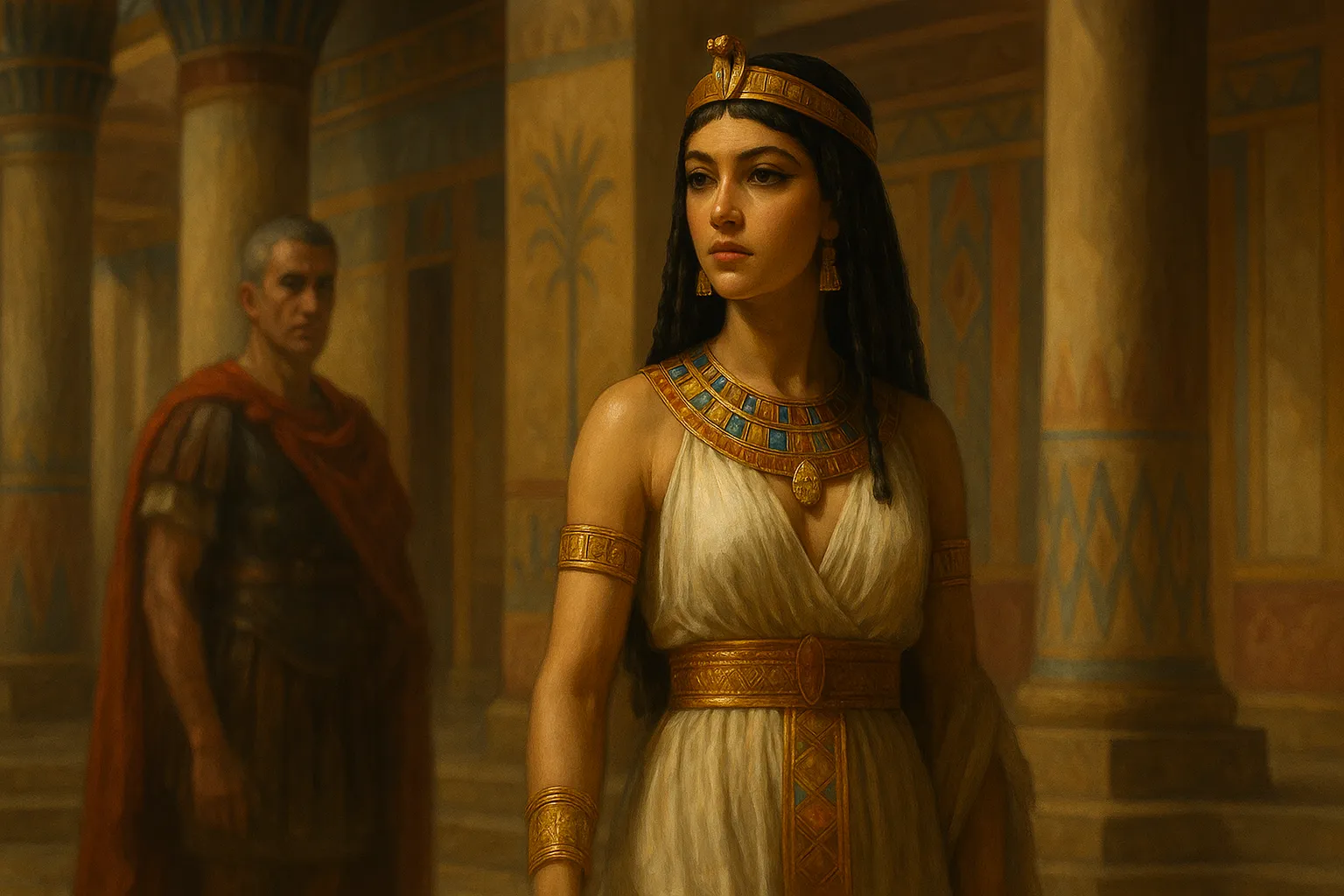
At 18 years old, Cleopatra ascended to the throne alongside her ten-year-old brother, Ptolemy XIII, whom she was required to marry according to custom. However, a power struggle soon erupted. Cleopatra was expelled from Alexandria by a court faction but refused to accept defeat. She raised an army and sought strategic alliances.
Fate intervened in the form of Julius Caesar, the most powerful Roman general of the time, who arrived in Egypt in pursuit of Pompey during Rome’s civil war. Cleopatra arranged a secret meeting with Caesar—legend says she was smuggled in wrapped in a rug—and captivated him with her intelligence as much as her beauty.
With Caesar’s support, Cleopatra reclaimed her throne, defeated her brother, and was restored as queen. But not as a puppet: she did so on her own terms. In 47 BCE, she gave birth to a son, Caesarion, whom she claimed as the heir of both Egypt and Caesar’s bloodline.
Cleopatra and Julius Caesar: Love, Alliance, and Power
Cleopatra’s relationship with Caesar was far more than a romantic affair—it was a calculated political alliance. Cleopatra sought Roman protection to preserve Egypt’s independence, while Caesar viewed her as a stabilizing force in the eastern Mediterranean.
In 46 BCE, Cleopatra traveled to Rome, dazzling the public with her opulence and exotic customs. She resided there as a foreign queen under Caesar’s protection, stirring admiration and scandal among the Roman elite. After Caesar’s assassination in 44 BCE, Cleopatra returned to Egypt, vulnerable but determined to protect her son’s legacy.
Caesarion was declared pharaoh, though Cleopatra retained true power. She now faced a new geopolitical landscape: Rome was divided, and Cleopatra needed a powerful ally.
Cleopatra and Mark Antony: Tragedy and Shared Ambition
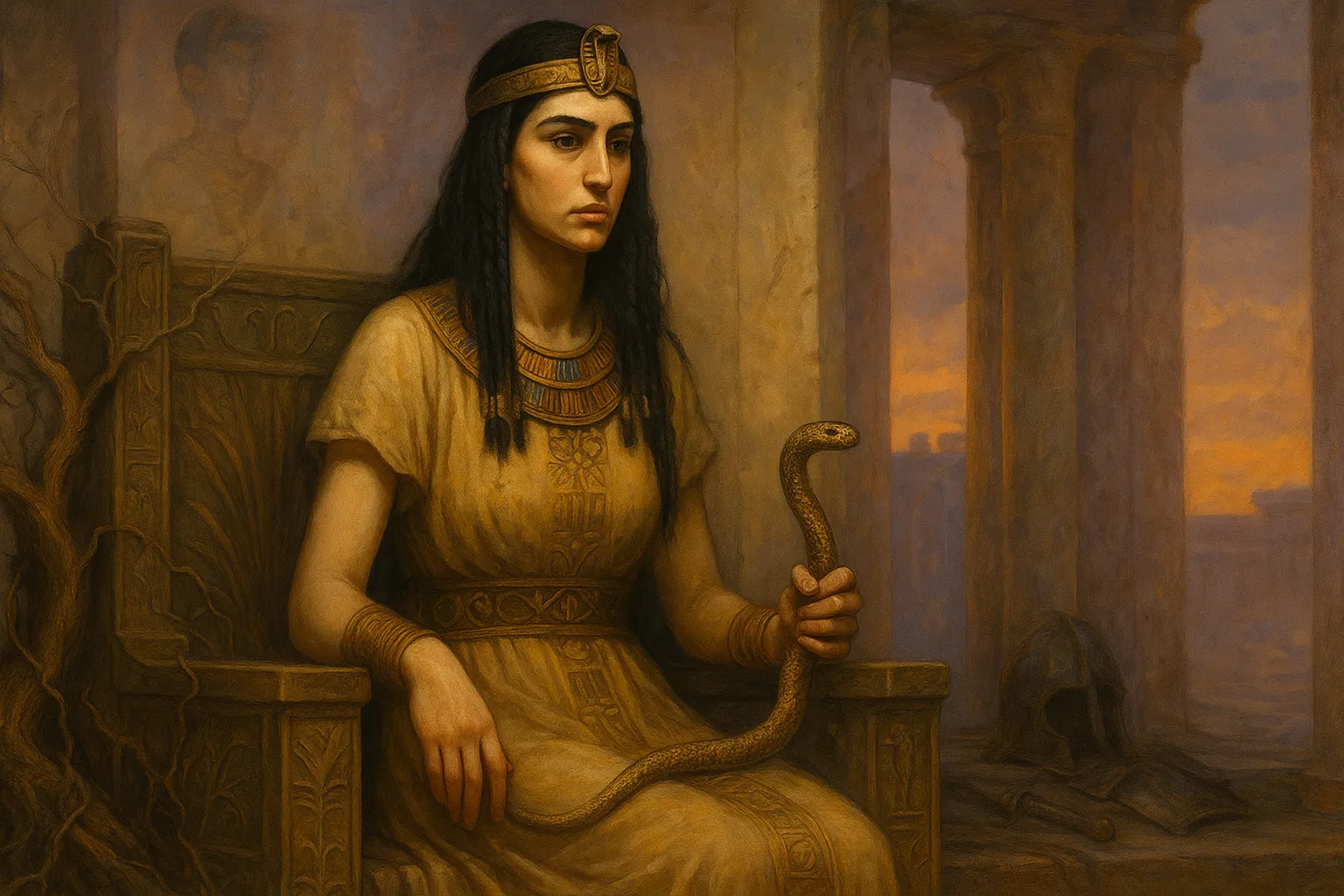
The next great figure in Cleopatra’s life was Mark Antony, one of Caesar’s most trusted generals and a key power broker in the post-Caesar world. Their alliance began as a military and commercial partnership but soon evolved into a passionate love affair and a political union.
Antony needed Egypt’s wealth to fund his campaigns in the East; Cleopatra needed Rome’s military might to protect Egypt’s autonomy. Together, they formed a formidable couple, sharing power, riches, and an eastern vision of governance that clashed with Roman conservatism.
They had three children and established a de facto dual empire. But their union was perceived in Rome as a betrayal. Octavian (the future Emperor Augustus) used the relationship to rally public opinion and justify a war that was, in truth, about absolute power in Rome.
The decisive moment came in 31 BCE, at the Battle of Actium, where Octavian’s fleet defeated that of Antony and Cleopatra. The couple fled to Egypt. What followed was a tragedy worthy of Greek drama.
The Fall of Egypt: The Queen’s Final Act
Cornered in Alexandria, Cleopatra and Antony saw that their defeat was irreversible. Believing Cleopatra to be dead, Mark Antony took his own life. When Cleopatra learned the truth, she made a final choice.
According to the most famous version, Cleopatra committed suicide on August 12, 30 BCE, by allowing herself to be bitten by an asp—a venomous serpent and royal Egyptian symbol. Other theories suggest she used a fast-acting poison prepared by her physicians.
With her death, the age of the pharaohs ended, and Egypt was annexed as a Roman province. Caesarion was executed, and her other children were taken to Rome as trophies.
But Cleopatra did not die a victim—she died a sovereign. Her suicide was a final act of defiance: she chose death over humiliation in a Roman triumph.
Cleopatra’s Enduring Legacy
Cleopatra faded from historical memory for centuries until Renaissance scholars and archaeologists rediscovered her. Over time, her image has been recast: as a temptress, a heroine, a martyr, a goddess, and a feminist icon. Yet the historical Cleopatra is even more compelling.
She was:
- The last Pharaoh, defender of Egypt’s sovereignty.
- An educated woman, capable of debating scholars, diplomats, and philosophers.
- A political strategist, fluent in the codes of male-dominated Roman power.
- A mother and leader, who fought for the future of her children and her people.
Her life proves that power isn’t always wielded by force. Cleopatra mastered persuasion, image, language, and endurance. She was the last queen of Egypt—but the first to challenge the narrative that victors tried to impose upon her.
A crown that defied time
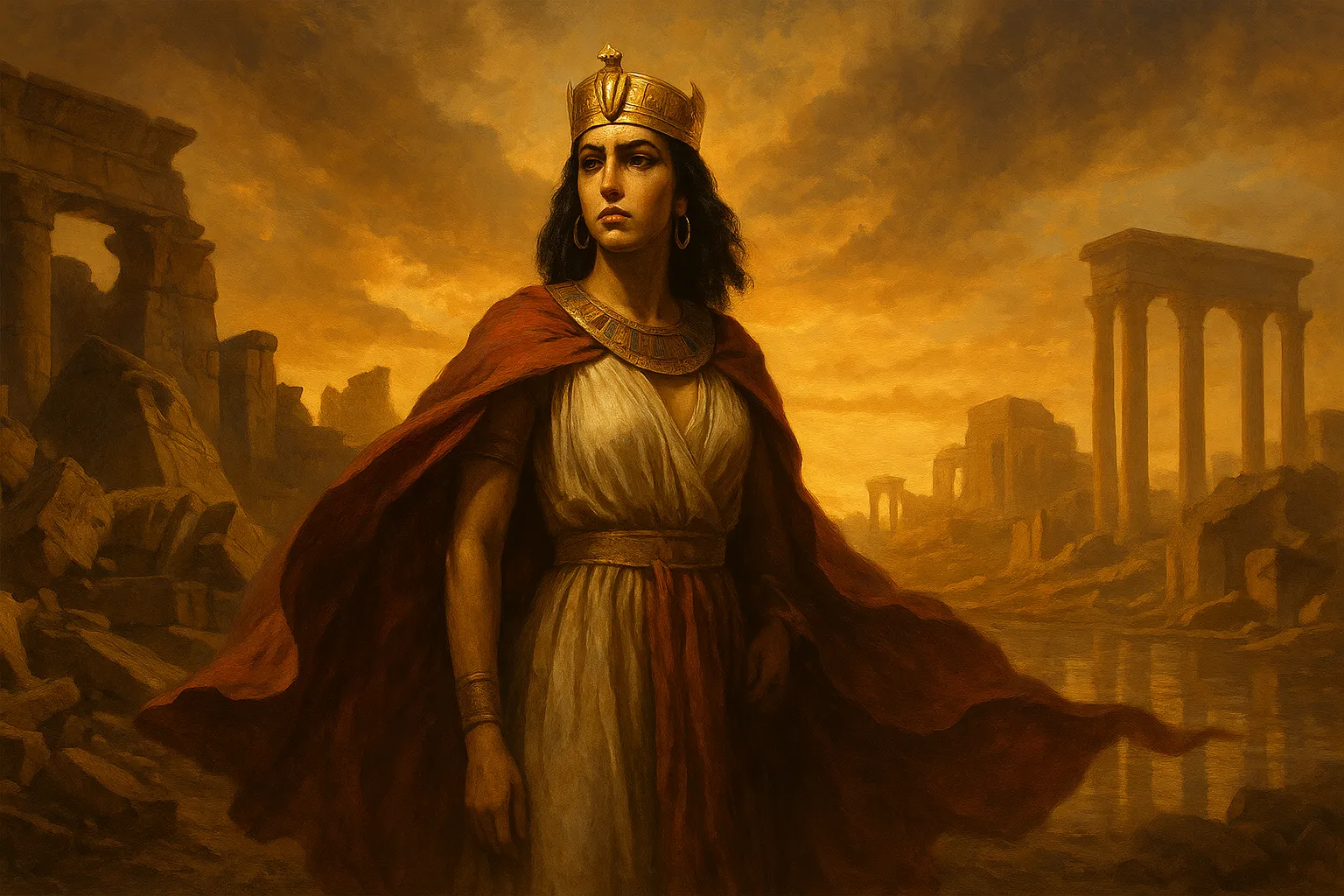
Cleopatra lived at a turning point in history, when the ancient world collapsed and Roman imperialism took root. She navigated cultures, languages, and loyalties with unmatched skill. Though ultimately defeated, her story endures.
Today, Cleopatra represents a woman who refused to be ornamental. She was a queen, a lover, a mother, a strategist, and a symbol of enduring influence. In her complexity lies her immortality.

